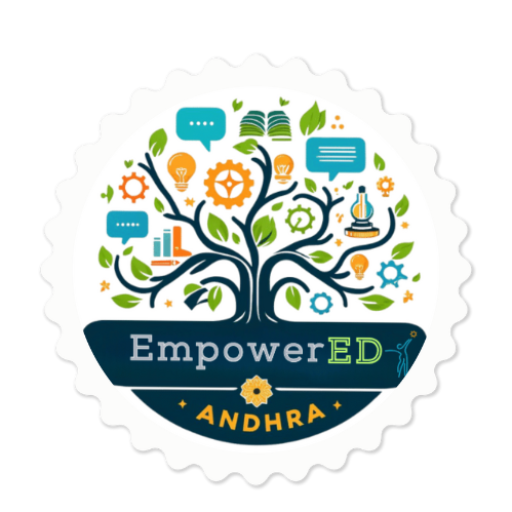Connect Learning to Real-World Contexts: Strategies for Teachers
Education is not just about absorbing facts and figures; it’s about understanding how knowledge applies to the real world. Teachers play a vital role in bridging the gap between theoretical learning and practical application. By connecting classroom concepts to real-world contexts, educators can make lessons more engaging, relevant, and impactful for students. This approach not only fosters critical thinking and problem-solving skills but also prepares students for life beyond school. In this article, we’ll explore why real-world connections in education matter, strategies teachers can use to implement them, and practical examples across various subjects. Why Real-World Connections Matter 1. Enhancing Engagement When students see how their learning relates to real-world scenarios, their curiosity is sparked. For instance, understanding how fractions work when doubling a recipe makes math lessons more relatable and enjoyable. 2. Promoting Critical Thinking Real-world applications require students to analyze, evaluate, and solve problems. This nurtures their ability to think critically and make informed decisions. 3. Developing Lifelong Skills Skills like collaboration, communication, and adaptability are essential in the real world. By integrating these into lessons, teachers can help students thrive in professional and personal life. 4. Encouraging Innovation Connecting lessons to real-world issues encourages students to think creatively. For example, designing solutions for local environmental challenges fosters innovation and a sense of responsibility. 5. Making Learning Relevant Students often question the relevance of what they learn. Real-world connections answer this by showing how knowledge is used in everyday life, careers, and societal progress. Strategies for Teachers to Connect Learning to Real-World Contexts 1. Project-Based Learning (PBL) PBL involves students working on projects that solve real-world problems over an extended period. This method allows students to apply theoretical knowledge in practical settings. Example: 2. Case Studies Case studies expose students to real-life scenarios that require critical thinking and problem-solving. Example: 3. Field Trips and Experiential Learning Field trips provide hands-on experiences that bring classroom concepts to life. Example: 4. Guest Lectures and Industry Collaborations Inviting professionals from various fields to share their experiences helps students see the practical application of their studies. Example: 5. Community-Based Projects Engaging students in community issues helps them understand their role as active citizens. Example: 6. Technology Integration Leverage technology to simulate real-world scenarios. Example: 7. Connecting Current Events to Lessons Using news articles, social media trends, or global events as teaching tools makes lessons timely and relevant. Example: 8. Interdisciplinary Learning Combining concepts from different subjects to solve real-world problems mirrors how challenges are addressed outside school. Example: 9. Role-Playing and Simulations Role-playing allows students to step into the shoes of professionals, understanding their challenges and decision-making processes. Example: 10. Encourage Self-Directed Learning Give students the autonomy to explore real-world applications of their interests. Guide them in researching and presenting their findings. Example: Real-World Examples Across Subjects 1. Science Topic: Conservation of EnergyReal-World Connection: Students investigate energy usage at home and propose energy-saving measures, like using LED bulbs or solar panels. 2. Mathematics Topic: GeometryReal-World Connection: Students design blueprints for a house, applying concepts of area, perimeter, and volume. 3. Social Science Topic: DemocracyReal-World Connection: Conduct mock elections in the classroom to understand the electoral process. 4. Language Arts Topic: Persuasive WritingReal-World Connection: Students write letters to local authorities advocating for improvements in their community. 5. Technology Topic: CodingReal-World Connection: Develop a basic website or app for a local business or school event. Practical Tips for Teachers Encourage Reflection: Ask students to reflect on how their learning connects to real life and future goals. Challenges and Solutions 1. Time Constraints Challenge: Teachers often have to stick to tight schedules to complete the syllabus.Solution: Integrate small real-world activities within the regular curriculum instead of adding extra tasks. 2. Resource Limitations Challenge: Not all schools have access to advanced tools or field trips.Solution: Use digital tools, virtual field trips, and simulations to overcome these barriers. 3. Assessment Difficulties Challenge: Evaluating practical learning isn’t always straightforward.Solution: Use alternative assessments like presentations, portfolios, and group discussions. Success Stories Case Study 1: Tackling Local Environmental Issues Objective: Teach students about pollution.Activity: Students collected data on waste management practices in their locality and proposed solutions to reduce plastic use.Outcome: The project not only enhanced their understanding of pollution but also inspired actionable changes in the community. Case Study 2: Financial Literacy Project Objective: Make math lessons practical.Activity: Students created a monthly budget for their families, factoring in expenses, savings, and unexpected costs.Outcome: Students gained a deeper understanding of percentages, ratios, and the importance of financial planning. The Future of Real-World Learning As education evolves, the integration of real-world contexts will become even more significant. Emerging trends include: Conclusion Connecting classroom learning to real-world contexts is no longer a luxury; it’s a necessity in modern education. It makes learning meaningful, fosters essential skills, and prepares students to thrive in a complex world. Teachers, as facilitators of this transformation, play a pivotal role in designing lessons that go beyond textbooks and inspire curiosity, creativity, and action. By adopting strategies like project-based learning, case studies, and community engagement, educators can create a dynamic classroom environment where students learn not just for exams, but for life. Let’s reimagine education as a bridge to the real world, empowering students to become problem-solvers, innovators, and responsible global citizens.
Connect Learning to Real-World Contexts: Strategies for Teachers Read More »
